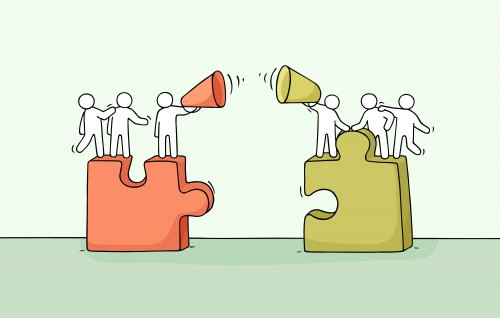In-Group Bias: What's it All About?

As social psychology tells us, people create categories and divide other people according to these categories. In other words, we create groups according to nationality, ethnicity, religion, gender, and preference, among others. This implies that some people will be in our same group and others will not. This leads to an in-group bias.
In-group bias, also called in-group favoritism, can be defined as people’s tendency to favor, benefit, or value the members of their group more than the people outside of their group. In other words, they favor people inside their group rather than people who don’t belong to the group.
The in-group bias and conflict
The in-group bias is considered a product of the conflict between groups. This is caused by the different interests between the groups or by having incompatible goals. Two groups can have the same goals, but when one reaches the goal, it means the other can’t.

Football is the perfect example. Football fans identify with their team, so they create a category that includes fans of their team but excludes fans of other teams. On the other hand, in a soccer league, the goal is to win the championship. But only one team can win. Therefore, if your team is the Green Bay Packers, you’ll have a conflict with the fans of other teams, especially if they pose a threat because you perceive that they have more opportunities than the Green Bay Packers to win the Super Bowl.
The conflict can be more or less intense. This depends on your involvement with your group, as well as other factors. In relation to the in-group bias, our attitudes, perceptions, preferences, and even behaviors will change. For example, we’ll see people from other teams as less friendly. Thus, this leads us to treat them poorly, whereas we treat the fans of our team better.
Advances in the study of in-group bias
Subsequent research has shown that conflicting interests or conflicts aren’t necessary for an in-group bias to manifest.
Although the members of other groups aren’t always mistreated, in-group bias always appears. We’ll always favor our group.
These investigations have also managed to explain the reason behind in-group bias. Starting from the fact that people feel motivated to have and maintain a positive concept and image of themselves, we find that people are partly defined by the groups they belong to. Therefore, if a person wants to have a good image, they have to make their group’s image positive as well. As a result, people are motivated to positively evaluate the groups they belong to.

How do you arrive at a positive evaluation of the group itself?
We evaluate our groups by comparison. We don’t say that our group is good, but that it’s better than another or the best group of all. Thus, when we compare our group with others, we obtain a positive assessment and our self-esteem increases. We conclude that our group is different and better than others. Researchers call this positive in-group distinctiveness.
On the other hand, in order to produce in-group bias and change our perceptions, evaluations, and behaviors as a result of the search for positive group distinction, four conditions must be met:
- People should identify with their group and use this identity to define the image they have of themselves.
- They must compare their group to others based on a characteristic that is considered important.
- The group they must compare their group to should be perceived as important.
- The real positions of the compared groups must be subject to some ambiguity.
In short, belonging to a group has consequences that we don’t always recognize. Favoring those we consider members of our group more than members of other groups is one of them. Therefore, knowing the effects of group identification represents the first step toward managing its impact on us.
This text is provided for informational purposes only and does not replace consultation with a professional. If in doubt, consult your specialist.








